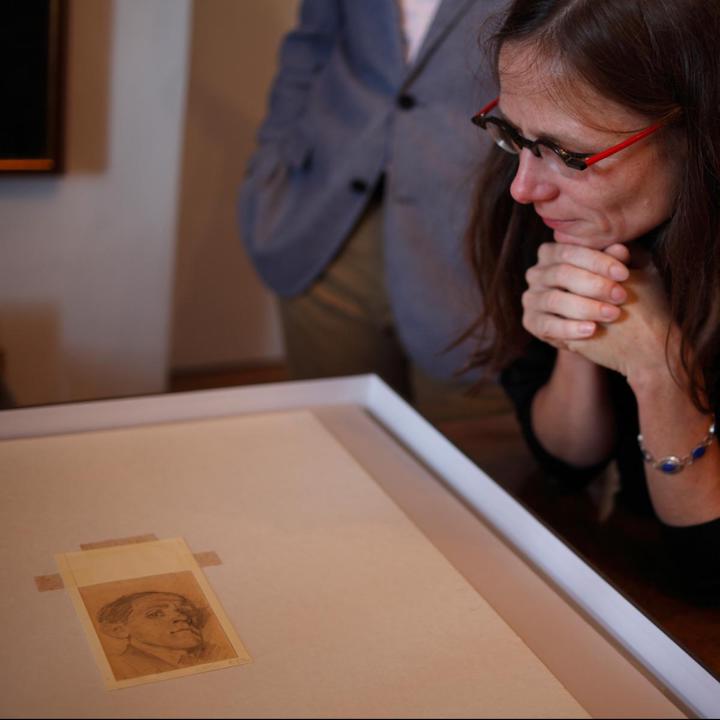Bruno Schulz (1892-1942) created a rich symbolic world in his small body of literary work and in his graphic art that left a huge legacy in Polish literature and in Jewish literature outside Poland. His stories contained mainly in two collections, Cinnamon Shops (1934) and The Hourglass Sanatorium (1938), along with a few other stories published separately, critical works, and letters, are a testament to the fecund cultural environment of the East European region of Galicia between the wars. Schulz is a secular Jewish writer whose stories, which we know from the recent discovery of an early work entitled, Undula (1922) seem to come out of the themes in his artwork, but were forged into their mature form as letters to the Yiddish modernist poet Debora Vogel. He wrote them in Polish, was celebrated in Polish avantgarde circles, and the most extensive body of Schulz scholarship is in Polish. His work reflects the influence of German writer Thomas Mann, as well as Franz Kafka and Leopold von Sacher-Masoch (author of Venus in Furs), who were German-language writers of non-German cities of the Austro-Hungarian empire like Schulz Prague and Lemberg (Lviv) respectively. Postwar Jewish writers in a variety of languages such as Philip Roth, Cynthia Ozick, Danilo Ki¡, David Grossman, Jonathan Safran Foer, and Nicole Krauss, have created characters on the model of Schulz’s biography. In the confluence of cultures brought about by modernization and aggressive industrial forces in the Drohobycz-BorysŽaw oil producing region, Schulz’s idea of the writer sifting through the trash tandeta to find and reassemble mutilated fragments of cast-off mythologies or systems of meaning would become a model for generations of writers following the upheaval of the Second World War, post-Communism, and even post-Colonialism.
In this episode of “Encounters with Polish Literature,” we are focusing on Karen Underhill’s research into Schulz in the Jewish modernist context of his own day, rather than his post-Holocaust legacy among the international community of Jewish writers, or strictly in the Polish-language modernist context of writers like StanisŽaw Ignacy Witkiewicz (“Witkacy”) and Witold Gombrowicz or Polish writers influenced by or responding to Schulz in their work like Tadeusz Kantor, Agata Tuszyska, Stefan Chwin, and Olga Tokarczuk.
Finally, Prof. Underhill says a few words about the extensive interdisciplinary offerings in Polish studies at The University of Illinos Chicago.
Learn more about this episode, and see the biography of the guest on the Polish Cultural Institute New York’s website. The linked page includes a bibliography of works in English by and about Schulz: Episode 5.
Bartek Remisko, Executive Producer
David A. Goldfarb, Host & Producer
Natalia Iyudin, Producer
- Episode 6 (July 1, 2021): Tadeusz Racewicz with Joanna Trzeciak (Kent State University).
- Episode 7 (August 1, 2021): Zofia NaŽkowska with Ursula Phillips (translator)
- Episode 8 (September 1, 2021): StanisŽaw Lem with Bozena Shallcross (University of Chicago)
This project is a part of the anniversary celebration of the Polish Cultural Institute New York.






